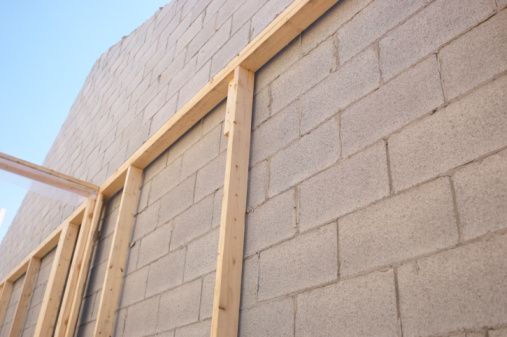Furring Out A Concrete Wall

Measure your concrete wall to determine the number of furring strips or studs you ll need.
Furring out a concrete wall. Allow the cement to dry. When furring out a wall with wood studs you ll want to space out your furring strips about the same way you ll do with concrete or brick but you ll need to make sure the vertical lines that you draw are directly over the studs. Adding a wall finish to a concrete wall can be more that applying paint. Says he was told that you do not need a permit to fur out a wall use foam insulation and install drywall over it.
Insulate the foundation wall. Do this at 10 inch intervals along the length of the furring strip. If the basement walls are made of poured concrete check for rust spots at the metal ties. If this is true i would drylock the walls possibly install a vapor barrier use plastic composite furring strips pink foam and mold moisture resistant drywall.
Applying plywood to concrete brick or block wall. Build a couple closets no permit needed put in some electrical. Mist the metal tie hole with water and use a margin trowel to apply hydraulic cement to plug each hole. Use a hammer drill and mortar bit that is the same size as the concrete fastener.
Step 1 preparation. They need to be spaced right set plumb and attached securely to the wall. This article will discuss how to fasten furring strips to concrete brick or block walls. Excess holes will also allow water to seep through the cinder block walls.
There are many situations where one would want to cover over a brick concrete or block walls. Drill into the wood while also drilling into the mortar of the brick. For some homes this is 16 inches apart. In most applications vertical anchoring is easier.
Stand up one furring strip at the end of your wall and begin drilling the pilot holes. They can be anchored to brick block or concrete either horizontally or vertically. The challenge then is to install the furring strips correctly. Furring strips are typically 1 x 2 or 1 x 3.
Installing furring strips on a masonry wall reduces the number of holes punctured into the cinder block which weakens the block. Furring strips are long thin pieces of wood nailed to cinder blocks in order to support a finished wall. Furring strips are long thin strips of metal or wood that create a support system for a finished surface in a room.



















